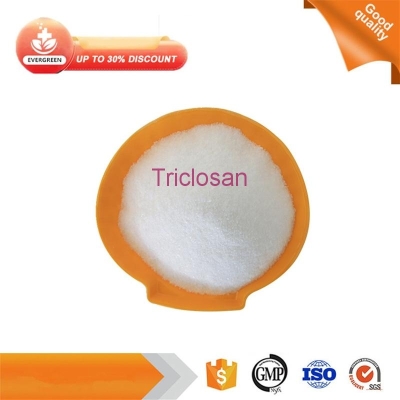Melia Melia bark
-
Last Update: 2010-09-25
-
Source: Internet
-
Author: User
Search more information of high quality chemicals, good prices and reliable suppliers, visit
www.echemi.com
Chinaberry tree bark source: dry bark and root bark of Melia azedarach L Plant form: deciduous tree Bark longitudinally split, young branches stellate pilose Leaves alternate, 2-3-pinnate compound leaves, leaflets ovate to elliptic, 3-7cm long and 2-3cm wide, apex long and pointed, margin with obtuse teeth of different depths, stellate hair when young, white hair only along veins Panicles axillary; calyx 5-lobed, hairy; petals 5, lavender, hairy outside; stamens 10; ovary superior, 4-5-loculed Drupe nearly globose, 1-1.5cm in diameter, yellowish brown, glossy Flowering may, fruiting October Born on a hillside, field, or cultivation It is produced in North China, East China, Central South and southwest China Harvesting: cut and dry in spring and autumn, or remove the rough skin and dry in the sun Characteristics: the bark is irregular, lamellar, grooved or semi coiling, with different length and width, 2-6mm thick The outer surface is grayish brown or grayish brown, rough, and the one with rough skin removed is light yellow; the inner surface is similar to white or light yellow Tough, not easy to break, cross-section fiber, lamellar, easy to peel Odorless, bitter Chemical constituents: melisendanin, kulactone, kulinone, Mcthyl kulonate, toosendanin, etc Sexual taste: cold in nature, bitter in taste Function indications: insect repellent treatment of ringworm It is used for the treatment of Ascaris enterobiasis, abdominal pain of vermicularia, external itching of scabies Note: the commercial neem bark also includes the dry or root bark of toosendan sieb.et Zucc [English name] cortex Meliae [alias] Melia azedarach, Melia fruit, Melia jujube, Melia azedarach, forest tree, emerald tree, Zihua tree, Melia bark [source] this product is the dry bark and root bark of Melia toosendan Sieb Et Zucc Or Melia azedarach L Peel and dry in spring and autumn, or remove the rough skin and dry in the sun [preparation] remove impurities, wash, moisten, shred and dry [properties] the product is irregular plate, groove or semi roll shape, with different length and width, 2-6 mm thick The outer surface is grayish brown or grayish brown, rough, with interlaced longitudinal wrinkles and punctate grayish brown pores The one with rough skin removed is light yellow; the inner surface is like white or light yellow Tough, not easy to break, cross-section fiber, lamellar, easy to peel Odorless, bitter [identification] (1) take a section of this product, fold and knead it by hand, and it can be divided into multi-layer flakes, layers of yellow and white, each layer of flakes has very fine mesh (2) take 1g of this product powder, add 10ml of ether, soak for 2 hours, shake and filter at any time Take 1ml of filtrate, after volatilization, add several drops of p-Dimethylaminobenzaldehyde test solution, which is red; take 1ml of filtrate, put it in a test tube, after volatilization, add 1ml of acetic anhydride, stir, add several drops of sulfuric acid along the tube wall, the acetic anhydride layer is green, and the sulfuric acid layer is red to purplish red (3) take 2G of this product powder, add 25ml of acetone, ultrasonic treatment for 25min, filter it, evaporate the filtrate to dryness, add 1ml of methanol to the residue to dissolve it as the test solution In addition, 2G of the control drug was taken and made into the control drug solution by the same method According to the test of thin layer chromatography (Appendix Ⅵ b), take 5 μ l of each of the above two solutions, and place them on the same silica gel G thin layer plate respectively Take benzene acetone (40:1) as the developing agent, develop them, take them out, dry them in the air, and inspect them under the ultraviolet light (365nm) In the chromatogram of the test article, there are fluorescent spots of the same color at the corresponding positions of the chromatogram of the reference medicine [sexual taste to meridian] bitter, cold; toxic Return to liver, spleen and stomach channel [function indications] expel insects and cure ringworm It is used for lumbricoidosis, enterobiasis, abdominal pain, external treatment of scabies and pruritus [usage and dosage] 4.5-9g Appropriate amount for external use, at the end of research, apply pig fat to the affected area [note] patients with hepatitis and nephritis should take it with caution Store in a dry and well ventilated place Xinchang Chengguan dividend CNC Manufacturing Factory Company: /cn: Fax: customer service:
This article is an English version of an article which is originally in the Chinese language on echemi.com and is provided for information purposes only.
This website makes no representation or warranty of any kind, either expressed or implied, as to the accuracy, completeness ownership or reliability of
the article or any translations thereof. If you have any concerns or complaints relating to the article, please send an email, providing a detailed
description of the concern or complaint, to
service@echemi.com. A staff member will contact you within 5 working days. Once verified, infringing content
will be removed immediately.







